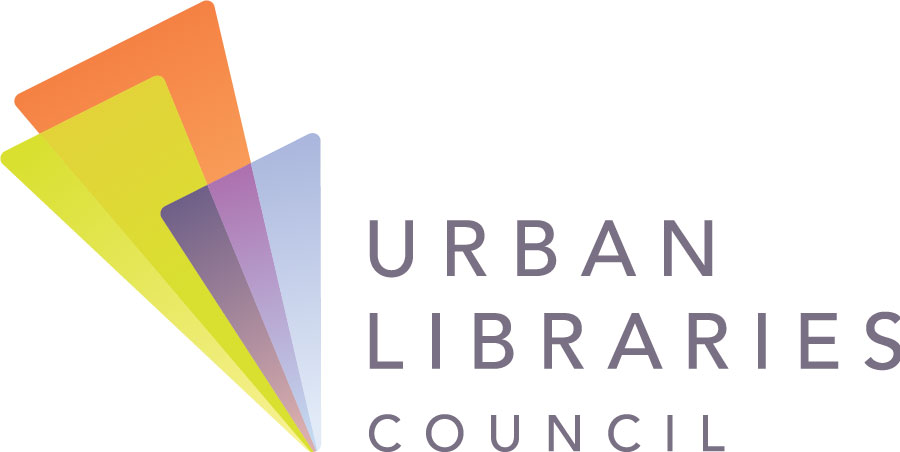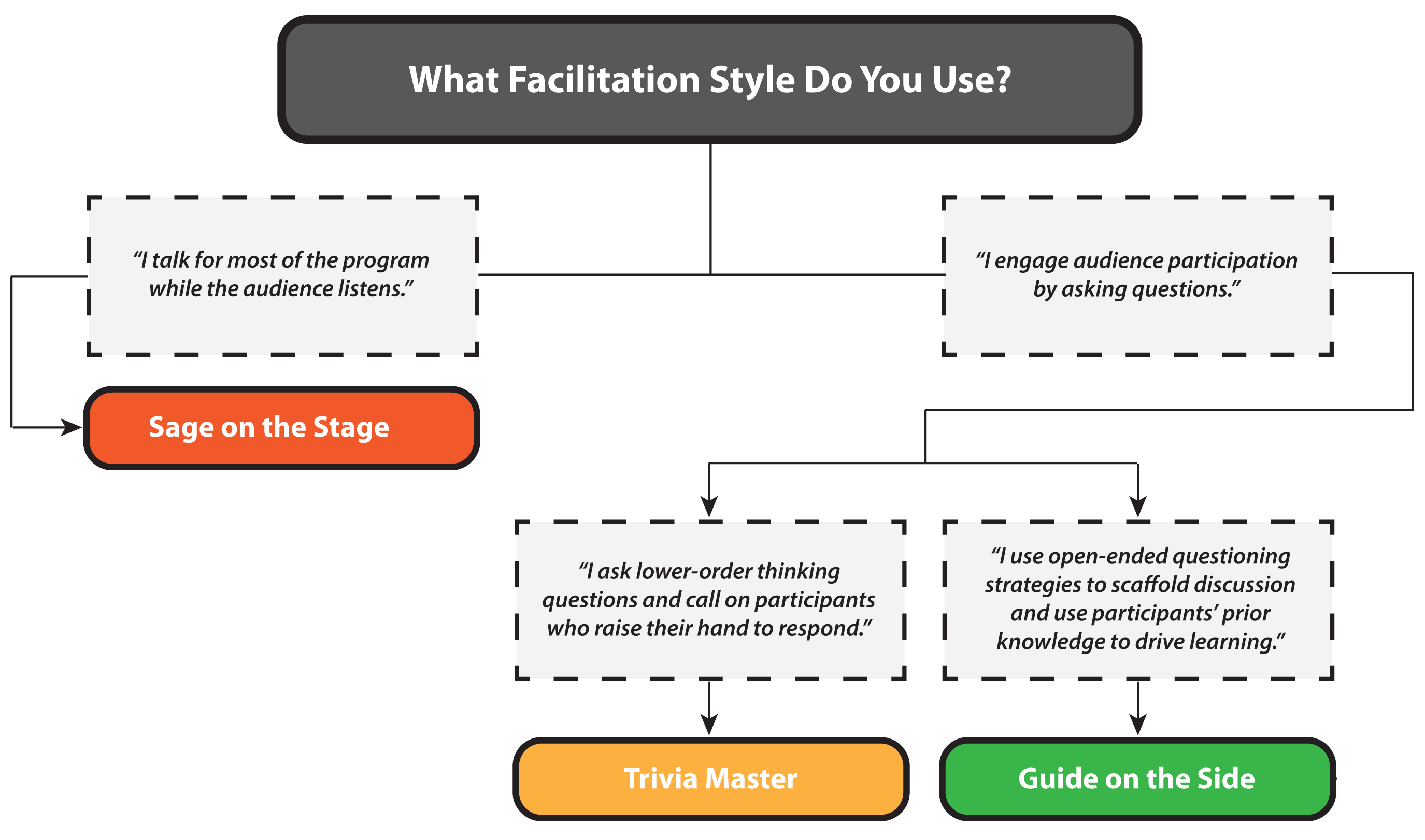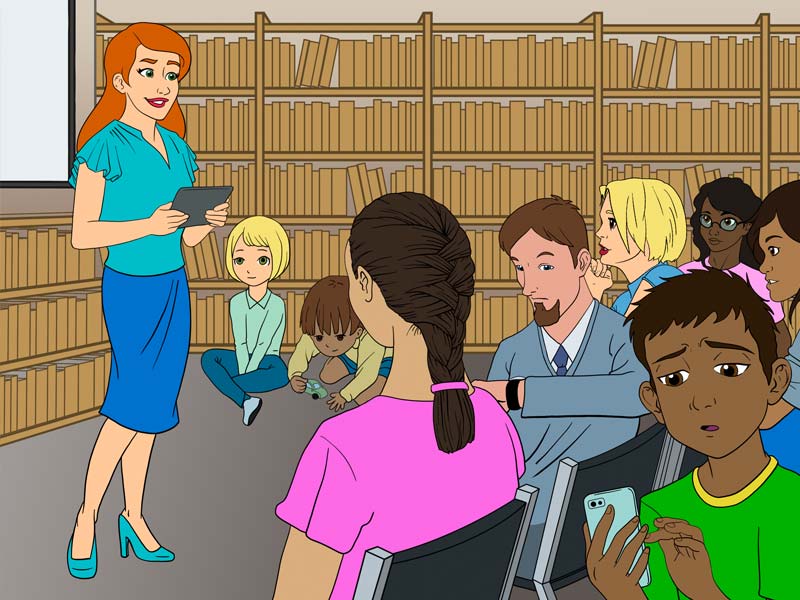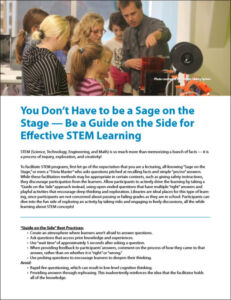You don’t have to be a lecturing, all-knowing subject matter expert to facilitate STEM learning. This “Sage on the Stage” approach is focused on the instructor and discourages participation from the learners. While this method is appropriate in certain contexts, such as giving safety instructions, it is not ideal for fostering exploration.
Another approach is to be a “Trivia Master” who asks questions pitched at recalling facts and simple “yes/no” answers. While this style encourages more participation than the “Stage on the Sage” method, there is not much room for lively discussions and it tends to favor extroverted learners while excluding the ideas of shy patrons.
Allow participants to actively drive the learning by taking a “Guide on the Side” approach by using open-ended questions that have multiple “right” answers and playful activities that encourage deep thinking and exploration. Participants can dive into the fun side of exploring an activity and engage in lively discussions while learning about STEM concepts!
Try out these tips to become a “Guide on the Side” facilitator
“Guide on the Side” Best Practices:
- Create an atmosphere where learners aren’t afraid to answer questions.
- Ask questions that access prior knowledge and experiences.
- Use “wait time” of approximately 5 seconds after asking a question.
- When providing feedback to participants’ answers, comment on the process of how they came to that answer, rather than on whether it is “right” or “wrong.”
- Use probing questions to encourage learners to deepen their thinking.
Avoid:
- Rapid-fire questioning, which can result in low-level cognitive thinking.
- Providing answers through rephrasing. This inadvertently reinforces the idea that the facilitator holds all of the knowledge.
Sample Questions and Prompts:
- Please turn and tell your family member or friend something you already know about.
- Design this with your friend/caregiver. Help each other figure this out. Take your time. Work on this with your friend/caregiver and I will come back in a few minutes to see how you’re doing.
- What do you notice about…? Can you tell me more?
- Can you show me how this works?
- I know how disappointed you were when your first design didn’t work out. I’m glad you didn’t give up.
Check out more resources on “How to Be a Guide on the Side”

The Urban Libraries Council and the Space Science Institute’s National Center for Interactive Learning partnered on the Partners for Middle School STEM project. HG&Co provided evaluation. This initiative was made possible in part by an Institute of Museum and Library Services Leadership Grant (LG-95-18-0025-18).





